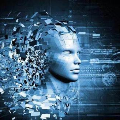As the immense opportunities enabled by large language models become more apparent, NLP systems will be increasingly expected to excel in real-world settings. However, in many instances, powerful models alone will not yield translational NLP solutions, especially if the formulated problem is not well aligned with the real-world task. In this work, we study the case of UMLS vocabulary insertion, an important real-world task in which hundreds of thousands of new terms, referred to as atoms, are added to the UMLS, one of the most comprehensive open-source biomedical knowledge bases. Previous work aimed to develop an automated NLP system to make this time-consuming, costly, and error-prone task more efficient. Nevertheless, practical progress in this direction has been difficult to achieve due to a problem formulation and evaluation gap between research output and the real-world task. In order to address this gap, we introduce a new formulation for UMLS vocabulary insertion which mirrors the real-world task, datasets which faithfully represent it and several strong baselines we developed through re-purposing existing solutions. Additionally, we propose an effective rule-enhanced biomedical language model which enables important new model behavior, outperforms all strong baselines and provides measurable qualitative improvements to editors who carry out the UVI task. We hope this case study provides insight into the considerable importance of problem formulation for the success of translational NLP solutions.
翻译:暂无翻译




